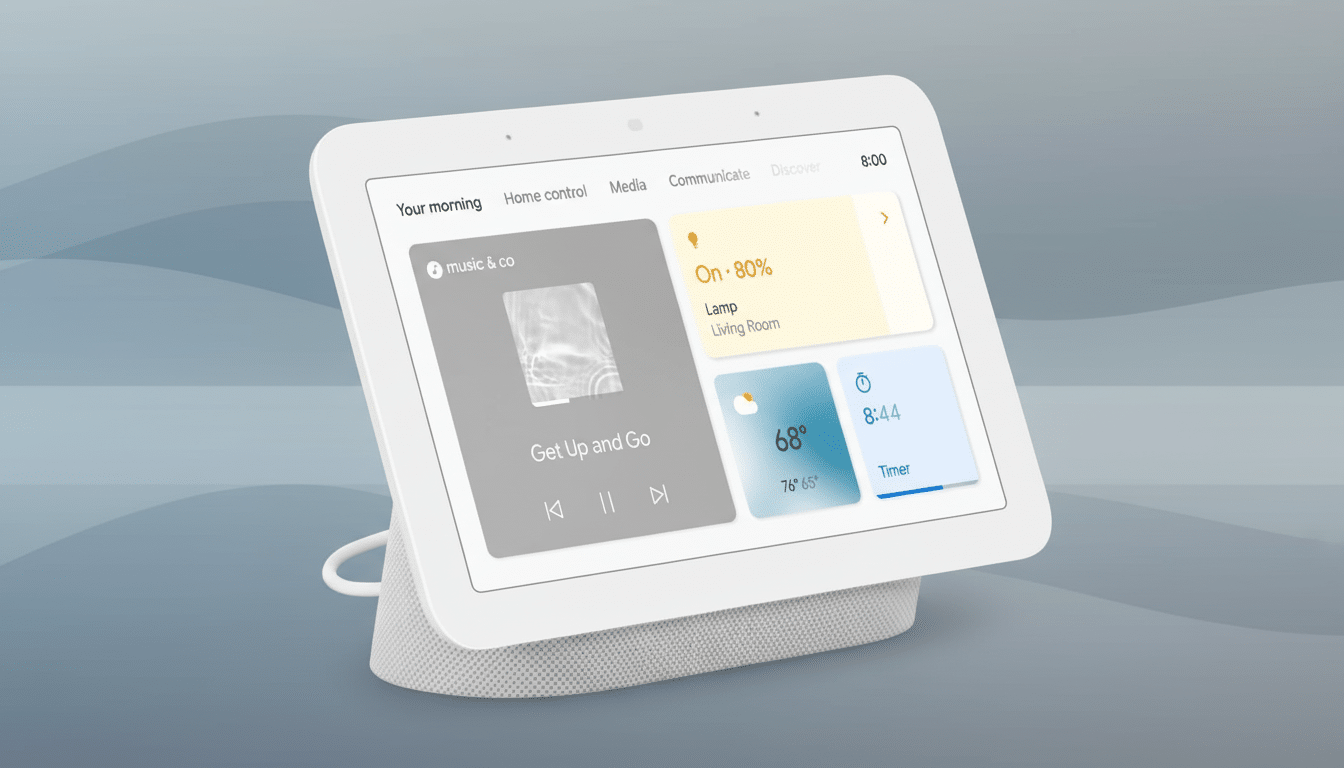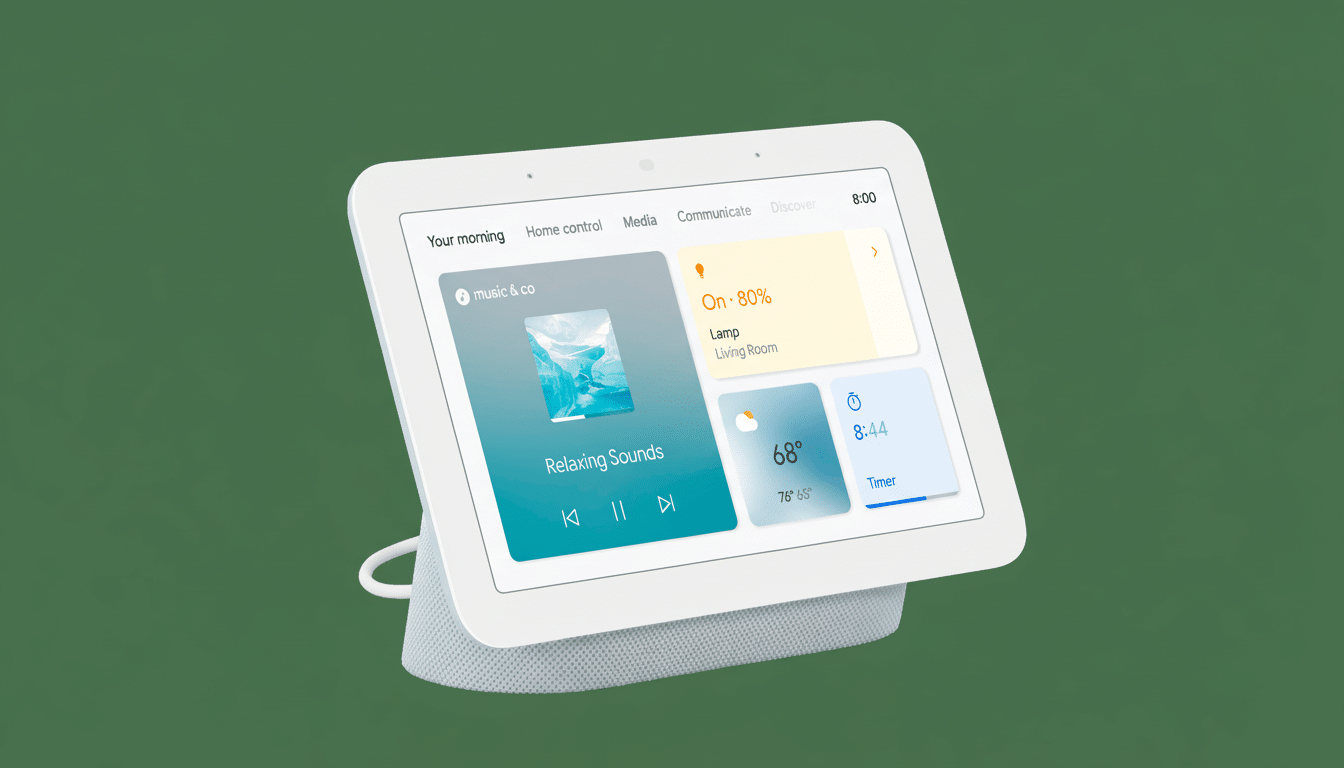Google finally admitted the quiet part out loud: Nest Hubs are here to stay. Google Home’s CPO Anish Kattukaran has practically confirmed the existence of smart displays in Google’s roadmap when asked about a potential new range of devices, saying “We are committed to creating that category and will definitely have announcements.” That recognition — after going years without updated Nest Hub hardware, no less — doesn’t necessarily mean a full refresh is imminent.
If you were looking forward to a swift follow-up to the Nest Hub (2nd gen), temper expectations. Reading between the lines of Google’s comments and looking elsewhere in the market, a refreshed Nest Hub probably is contingent on the company’s A.I. strategy ripening across the home.

What Google Actually Confirmed About Future Smart Displays
Kattukaran’s messaging was clear: Google is committed to the smart display form factor, and the Nest brand is still very much in play. He did not reveal hardware, timing or specs. Instead, he positioned smart displays as an ongoing cornerstone of Google’s smart home work — especially as Gemini starts to nestle its way into Home experiences.
That nuance matters. It’s been about four years since the last Nest Hub was released, and over that time, Google has trucked out its Pixel Tablet with a dock that doubles as a home display. The company has never declared that the Nest Hub line was over, but silence and a tablet-first strategy caused some among us to assume the worst. Now there’s on-the-record confirmation this plucky little category is, yes, alive and kicking if not quite ready for a whole new device yet.
Why a New Nest Hub Isn’t Imminent Despite Clear Signals
There are seemingly three forces causing it to freeze new hardware in place.
- First, Gemini integration. Google has been steadily integrating Gemini into Assistant and Home, but a true “multimodal” smart display requires more than just voice swaps — it requires predictable on-screen thinking, context sharing with cameras and sensors and low-latency responses from the cloud or on-device silicon. That software stack is still pending.
- Second, portfolio overlap. While on the couch, “The Pixel Tablet highlights kitchen counter basics like photos, timers, casting and navigation to your other smart home controls.” Releasing a Nest Hub too near that burns the risk of cannibalization unless Google can cut it with always-on ambient intelligence, improved far-field mics and deeper home automation.
- Third, market caution. Firms like Canalys and IDC have been following several years’ worth of softness in smart speaker and display shipments from the start of 2022, as consumers hang onto their devices for longer periods and upgrade at a slower cadence. Instagram said Tuesday that it’s launching a video hub on its platform called IGTV, where videos can run longer than one minute — which didn’t require cutting-edge hardware but simply glitzy software and service additions (Amazon just rolled out new Echo Show models with a smattering of Artificial Intelligence-backed Alexa features). Google wouldn’t do it just to parity-match.
What a Next-Gen Nest Hub Needs to Do to Stand Apart
In order to return to justify its own lane next to the Pixel Tablet, a future Nest Hub would want to double down on ambient AI and the home’s real-time context. Imagine Gemini recounting events from your overnight camera, suggesting automations based on patterns or translating a doorbell conversation in real-time. These are significant, daily victories — so long as they come quickly and dependably.

Expectations will also comprise Matter-first controls, Thread border router support and strong local execution for key automations. Google has been a lead supporter of the Connectivity Standards Alliance, and the flagship display ought to serve as a solid foundation for cross-brand smart homes.
Hardware-wise, privacy will remain non-negotiable. The second-gen Nest Hub’s radar-based sleep tracking via Soli proved Google doesn’t need a camera to add new sensors. Whichever model comes next, if it has a camera in its head, it’s going to want obvious physical controls, unmistakable on-device processing indicators and an open approach toward collected data. The other necessity would be a faster, neural-capable chipset on the device for offloading some Gemini tasks locally, to decrease latency and reliance on the cloud.
How We Got Here and Why Nest Hub Hardware Paused
The Hub’s pause also came as Google was rethinking the smart home from the ground up: a new Home app, more powerful automation scripting, and above all, a web dashboard for power users. In the meantime, the Pixel Tablet allowed Google to gauge suppliers’ willingness to deliver a convertible screen as it re-architected the services layer. The OS story here certainly matters too — recent Nest Hubs run on Fuchsia, which in theory gives Google tighter control over performance and updates. Syncing the automation engine of Fuchsia, Gemini and Home is probably a prerequisite for new hardware.
What to Watch Next as Google Readies Smarter Home Tech
Clues usually precede hardware. Keep an eye out for stronger Gemini moves in the Home app, more extensive “help me script” automation capabilities and evidence of a unified household model that lets AI understand rooms, routines and roles. Firmware updates to the current Nest Hubs—particularly regarding Thread, Matter, or voice models—would also indicate prep work for a new display.
The takeaway is clear: Google’s smart display story isn’t over, but the company seems committed to shipping something that actually feels smarter rather than newer. And if you’re holding out for a lead on the next-gen Nest Hub, be patient and hold your existing device as true—and don’t expect some kind of launch until Gemini’s home IQ has visibly leveled up.

